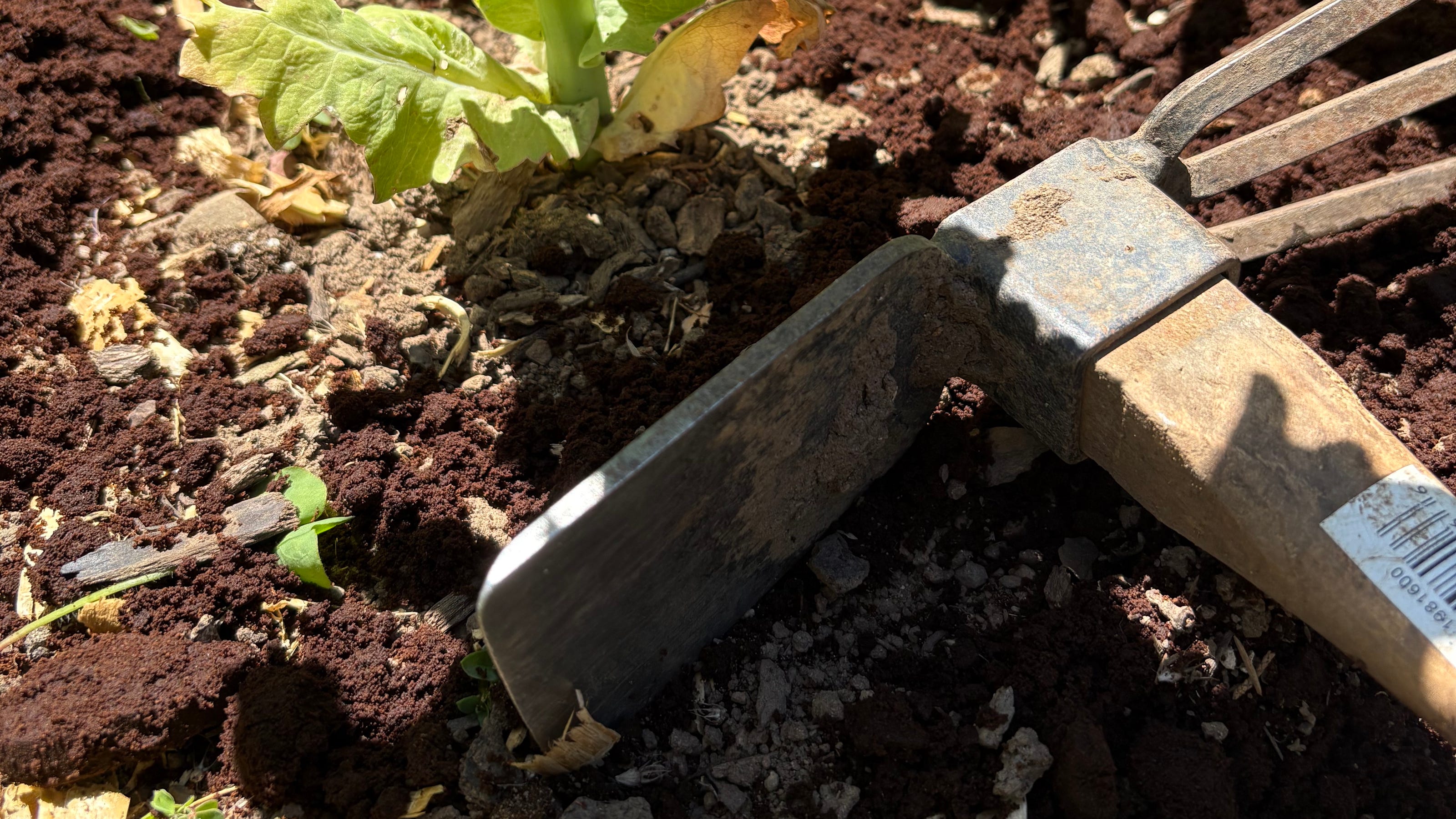Improve Plant Growth With Coffee Grounds: A Practical Guide

Welcome to your ultimate source for breaking news, trending updates, and in-depth stories from around the world. Whether it's politics, technology, entertainment, sports, or lifestyle, we bring you real-time updates that keep you informed and ahead of the curve.
Our team works tirelessly to ensure you never miss a moment. From the latest developments in global events to the most talked-about topics on social media, our news platform is designed to deliver accurate and timely information, all in one place.
Stay in the know and join thousands of readers who trust us for reliable, up-to-date content. Explore our expertly curated articles and dive deeper into the stories that matter to you. Visit Best Website now and be part of the conversation. Don't miss out on the headlines that shape our world!
Table of Contents
Improve Plant Growth with Coffee Grounds: A Practical Guide
Are you a coffee lover with a green thumb? Then you're in luck! Used coffee grounds, often tossed in the trash, can be a surprisingly effective and sustainable way to boost your plant's growth and health. This practical guide explores how to use coffee grounds as a natural fertilizer and soil amendment, helping you cultivate a thriving garden.
Why Coffee Grounds are Good for Plants:
Coffee grounds offer a wealth of benefits for your plants:
- Nutrient Boost: They're rich in nitrogen, phosphorus, and potassium – essential macronutrients for vigorous plant growth. Nitrogen, in particular, promotes lush foliage.
- Soil Improvement: Coffee grounds improve soil structure by increasing its aeration and drainage. This is especially beneficial for heavy clay soils. They also add organic matter, which enhances soil fertility over time.
- pH Balance: Coffee grounds are slightly acidic, making them ideal for acid-loving plants like azaleas, rhododendrons, blueberries, and hydrangeas. However, be mindful of the potential for over-acidification, as discussed below.
- Pest Deterrent: The caffeine in coffee grounds can act as a mild deterrent to certain garden pests, such as slugs and snails.
How to Use Coffee Grounds for Plant Growth:
There are several ways to incorporate coffee grounds into your gardening routine:
- Direct Application: Simply sprinkle a thin layer of dried coffee grounds around the base of your plants, avoiding direct contact with the stems. Avoid piling them too thickly, as this can hinder drainage and potentially lead to root rot.
- Composting: Mix coffee grounds into your compost pile to enrich the finished compost. The grounds add valuable nitrogen and help maintain moisture.
- Soil Amendment: Work spent coffee grounds directly into the soil when planting or transplanting. This improves soil texture and gradually releases nutrients.
- Mulching: Use a layer of coffee grounds as mulch around your plants to help retain moisture, suppress weeds, and regulate soil temperature.
- Worm Composting (Vermicomposting): Worms love coffee grounds! Add them to your worm bin to create nutrient-rich worm castings, an excellent fertilizer.
Important Considerations:
- Moderation is Key: While coffee grounds offer many benefits, using too much can negatively impact your plants. Over-acidification can occur, harming plant roots and altering soil pH. Start with small amounts and observe your plants' response.
- Fresh vs. Dried: It's generally recommended to use dried coffee grounds. Fresh grounds can compact easily and may hinder drainage. Allow your grounds to dry completely before using them in your garden.
- Not for All Plants: While beneficial for many, coffee grounds aren't suitable for all plants. Some plants are sensitive to acidic conditions. Always research the specific needs of your plants before applying coffee grounds.
- Potential for Mold: In damp conditions, coffee grounds can be prone to mold growth. Ensure proper aeration and avoid using overly wet grounds.
Conclusion:
Reusing coffee grounds in your garden is a simple, eco-friendly way to improve plant growth and contribute to a more sustainable lifestyle. By following these guidelines and understanding the nuances of using coffee grounds as a soil amendment, you can unlock the potential of this readily available resource and nurture a flourishing garden. Remember to always monitor your plants' health and adjust your application accordingly. Happy gardening!
Related Articles:
Keywords: coffee grounds, plant growth, fertilizer, organic gardening, soil amendment, composting, sustainable gardening, nitrogen, phosphorus, potassium, acid-loving plants, mulch, vermicomposting.

Thank you for visiting our website, your trusted source for the latest updates and in-depth coverage on Improve Plant Growth With Coffee Grounds: A Practical Guide. We're committed to keeping you informed with timely and accurate information to meet your curiosity and needs.
If you have any questions, suggestions, or feedback, we'd love to hear from you. Your insights are valuable to us and help us improve to serve you better. Feel free to reach out through our contact page.
Don't forget to bookmark our website and check back regularly for the latest headlines and trending topics. See you next time, and thank you for being part of our growing community!
Featured Posts
-
 Birmingham Capital Management Co Inc Al Divests 20 850 Bank Of America Shares
May 27, 2025
Birmingham Capital Management Co Inc Al Divests 20 850 Bank Of America Shares
May 27, 2025 -
 Brunei Sultans Hospitalization In Kl Fatigue Cited By Malaysian Government Sources
May 27, 2025
Brunei Sultans Hospitalization In Kl Fatigue Cited By Malaysian Government Sources
May 27, 2025 -
 Hs 2 Staff Supply Investigation Launched Into Two West Midlands Firms
May 27, 2025
Hs 2 Staff Supply Investigation Launched Into Two West Midlands Firms
May 27, 2025 -
 Thousands Of Miles Apart Then Love Then Loss A Dc Story
May 27, 2025
Thousands Of Miles Apart Then Love Then Loss A Dc Story
May 27, 2025 -
 The Enduring Legacy Of George Floyd Recollections From Family And Friends
May 27, 2025
The Enduring Legacy Of George Floyd Recollections From Family And Friends
May 27, 2025
Latest Posts
-
 England Vs West Indies Odi Live Streaming And Match Highlights
May 29, 2025
England Vs West Indies Odi Live Streaming And Match Highlights
May 29, 2025 -
 Republican Senators Gambit Pushing Trumps Large Scale Spending Plan
May 29, 2025
Republican Senators Gambit Pushing Trumps Large Scale Spending Plan
May 29, 2025 -
 Arkansas Rape Case How A Questionable Warrant Secured A Conviction Against A Former Police Chief
May 29, 2025
Arkansas Rape Case How A Questionable Warrant Secured A Conviction Against A Former Police Chief
May 29, 2025 -
 Day 5 French Open 2025 Live Match Updates And Results Sinner Pegula Djokovic
May 29, 2025
Day 5 French Open 2025 Live Match Updates And Results Sinner Pegula Djokovic
May 29, 2025 -
 Tescos Var System Self Checkout Camera Controversy
May 29, 2025
Tescos Var System Self Checkout Camera Controversy
May 29, 2025
